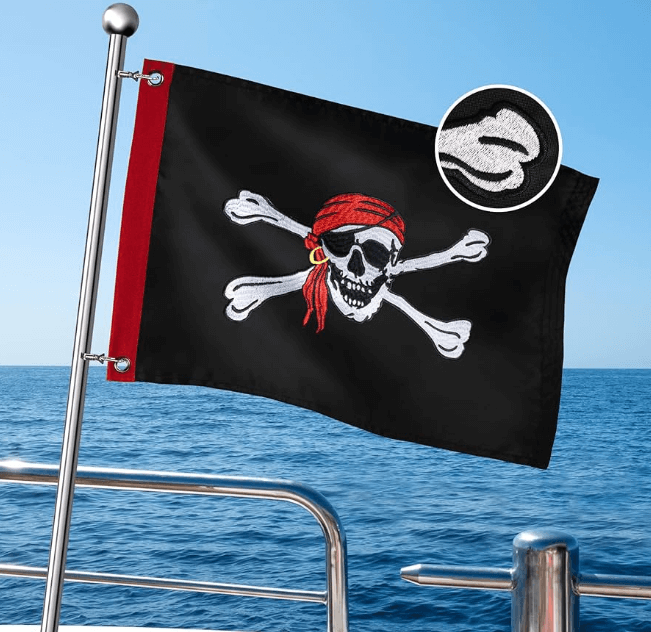In early days of submarines in the military, they were not well received. Many of them considered them to be unpatriotic as well.
One of the top opponents among the critics was First Sea Lord British Royal Navy’s Admiral Arthur Wilson. He did not approve of having submarine warfare even; he stated the enemy’s submarine crewmen upon capture were to be killed, like that of a pirate.
Words were undoubtedly required of Wilson to give a chill down the spine of the men in the crew of the British submarine HMS E9.
Back into port under the Jolly Roger—the dreadfully feared skull and crossbones—their daring declaration was directed specifically towards establishing their pirate myth, and in doing so, the very first time that a submarine had flown this emblem. And it would not be the last.

Early on, the practice was unique to British subs, but by World War II other navies—like Poland’s—also employed it. Crews began to display more than one Jolly Roger flag, each of which had been assigned for a vessel sunk.
Subsequently, when flags became too many to be put on the sail, submariners were provided with one flag upon which they embroidered symbols for different enemy vessels. A submarine did not receive its Jolly Roger until it had completed its first successful mission.
Nowadays, the traditional is followed by advanced ballistic and attack subs. The USS Jimmy Carter, an extremely advanced Seawolf-class submarine in the U.S. Navy, operates normally coming back to port with a pirate flag fluttering on its mast.
The Jolly Roger Isn’t Just for Submarines
Submarines are not the only ones embracing pirate imagery. The USS Kidd, a guided missile destroyer of the Arleigh-Burke class, features the Jolly Roger in its fleet colours—but the sailors don’t wait until they’ve completed an effective patrol to raise it.
The pirate heritage of the ship is derived from its namesake, Rear Admiral Isaac C. Kidd, who bore the same last name as the infamous 18th-century pirate Captain William Kidd. Even at the Naval Academy, classmates referred to Admiral Kidd as “Cap.” He was fatally shot on board the USS Arizona during the Pearl Harbor attack.
In his honor, the United States Navy in 1943 christened a Fletcher-class destroyer in his name. The men took the gesture one step further by obtaining both Kidd’s widow and the Navy’s approval to fly the Jolly Roger.
They did it one step further with a comedic twist—whenever they rescued downed pilots and returned them to their carriers, they exacted ice cream as a “ransom fee.” They were nicknamed the “Pirates of the Pacific.”
The modern USS Kidd continues the tradition. In addition to flying the Jolly Roger, the five-inch guns and interior doors of the ship feature painted skull and crossbones emblems.
More Than Just Flags
Customs evolve, and some navies have adopted a different unconventional practice. There exists an unsubstantiated, ancient story from the 1600s that one Dutch naval admiral, upon defeating the English, returned home with a broom flying from his mast—meaning he had “swept the seas clean” of his enemies.
Years after, the USS Wahoo (SS-238) American submarine revived the tradition of the broom. Commander Dudley “Mush” Morton led the sub on a series of successful raiding operations in its third patrol in 1943, sinking several Japanese ships, including a destroyer, freighters, an oil tanker, and a troop transport. As Wahoo docked back in Pearl Harbor, onlookers noticed a broom attached to the periscope—a boastful declaration that they sank all enemy ships that they attacked.
The tradition of the broom spread through the U.S. Navy and soon was adopted as a symbol for any tremendous achievement, not just battle triumphs. Today, many ships carry a broom as they exit sea trials, an allusion to their flawless performance.
From pirate banners to brooms, these sea traditions suggest that in the modern era of advanced war machines, there is still some place for good old-fashioned symbolism.







Leave a Reply